Do's and Don'ts of working a harvest
What's it like to work a harvest
Harvest time is here! There's an excitement in the air as all of the hard work in the vineyard culminates to the epic conclusion: picking the grapes and turning it into wine!
This will be my fourth harvest across three continents, and I wanted to share some helpful tips. Whether you have a harvest position lined up or just curious, read below to get the scoop.
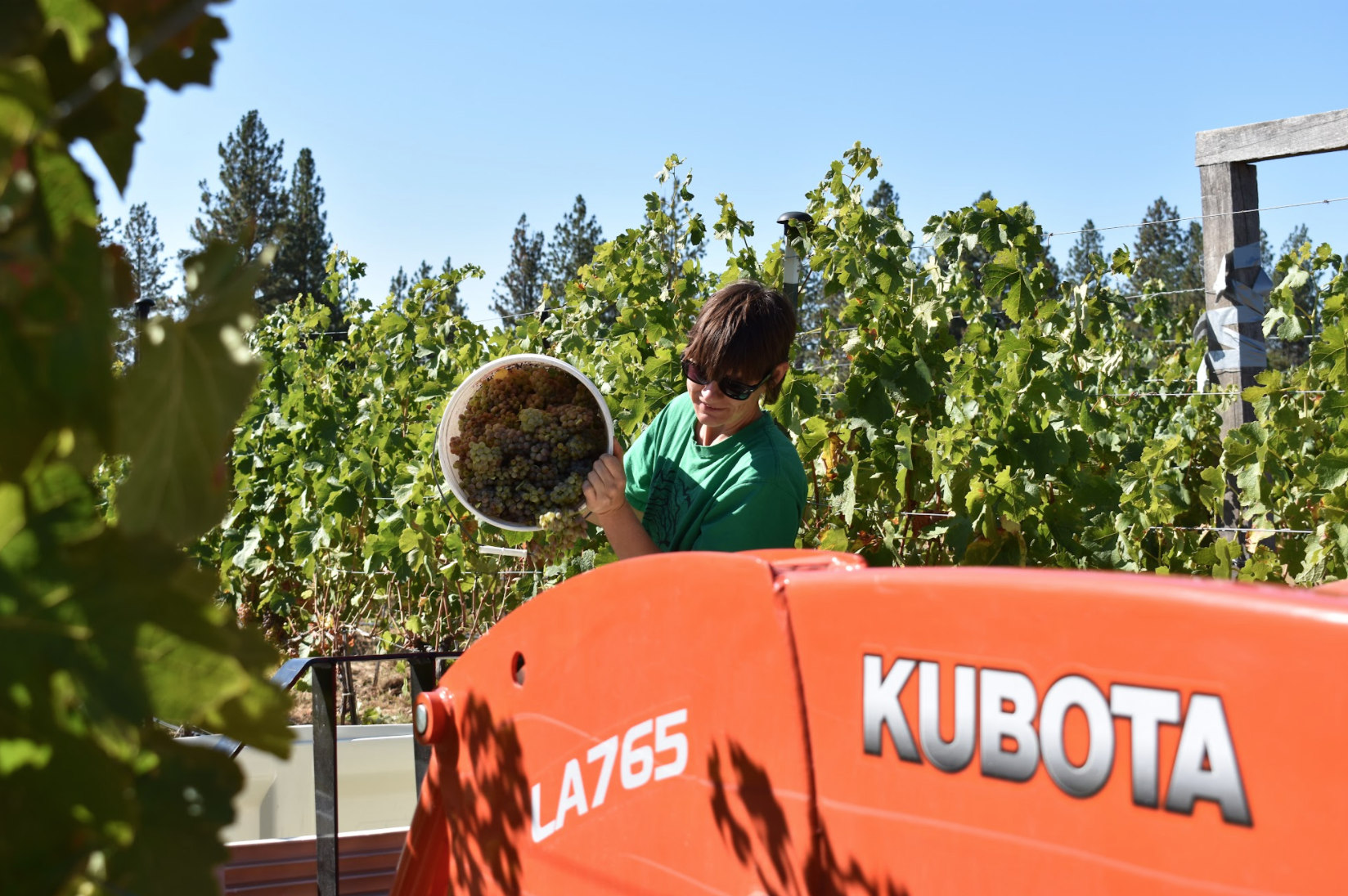
Do's and Don'ts
DO expect to work a lot.
Most of the year with winemaking and viticulture, hours can be estimated and scheduled fairly easily. All of this goes out the door during harvest. Expect long days and sometimes evenings well past dinner time. Harvest is a lot of hard work, but extremely rewarding if you're passionate about wine.
DO expect to learn.
One of the best reasons to get a harvest internship is to learn from winemaking professionals. Learn by doing is one of the most effective ways to absorb information. Employers realize this, and so they will be happy to answer questions during harvest (as long as the Q&A doesn't interfere with work). Winemaking courses at UC Davis were very interesting and packed with information; but nothing compares to the hands-on experience.
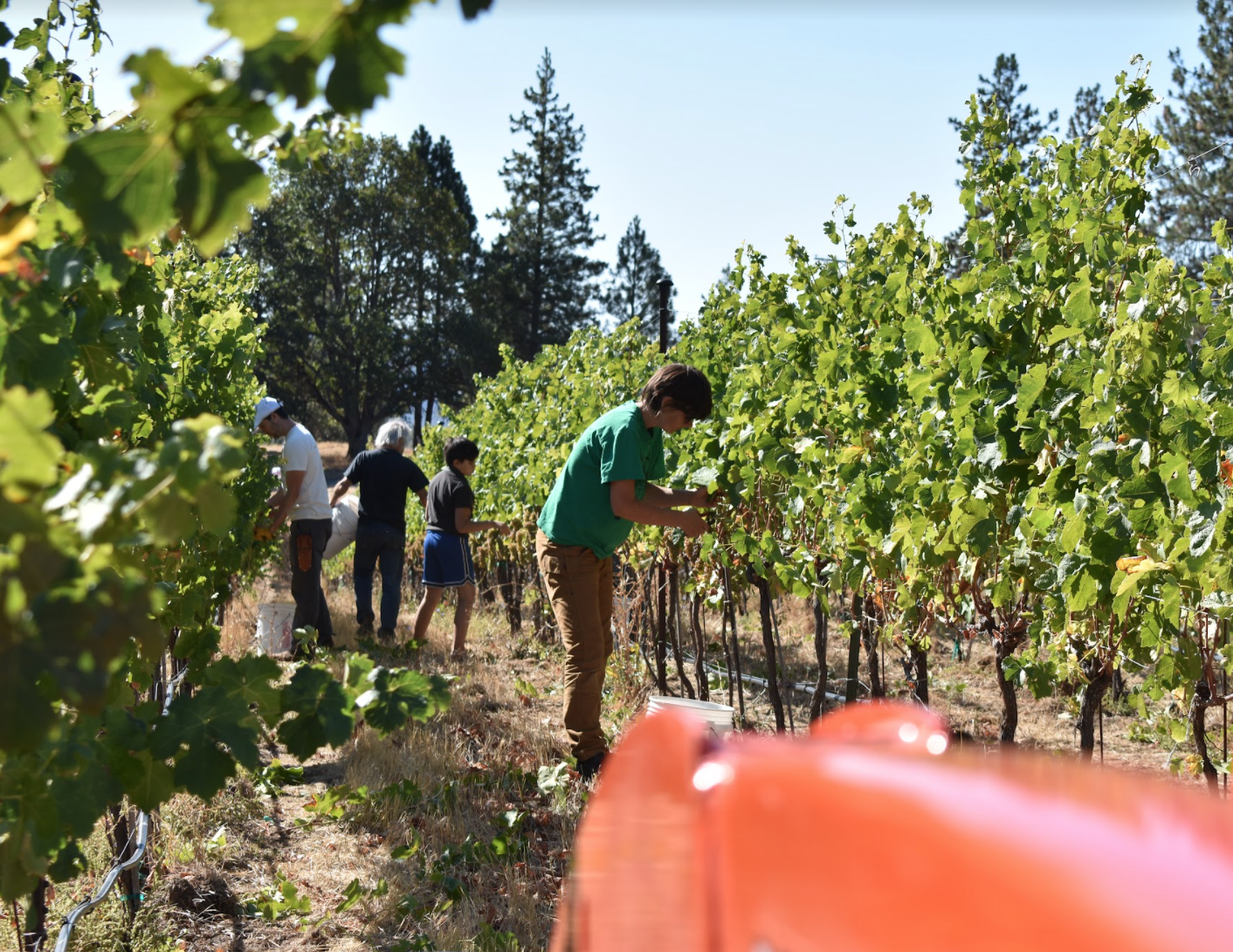
DON'T be afraid to ask for help
Time is valuable as there are only so many hours in the day. There is a lot to be done: cutting fruit from vine, sorting, pressing, cleaning, racking, running brix/temperature numbers, additions, punchdowns, pumpovers, cold soaks, cleaning again. Things move at a very fast pace and It can be overwhelming; especially if it's your first time. That said, most everyone we've met in the industry is gracious and willing to help. So if you don't understand something, speak up!
DO volunteer to cut
Most wineries will have crews hired for hand-harvesting, or will machine harvest. It may seem like picking fruit is a laborious, mindless task. However, we strongly recommend participating as it will give a new appreciation for the hard work that picking crews do and also a front row seat at the most important moment in a grape's journey to become wine.
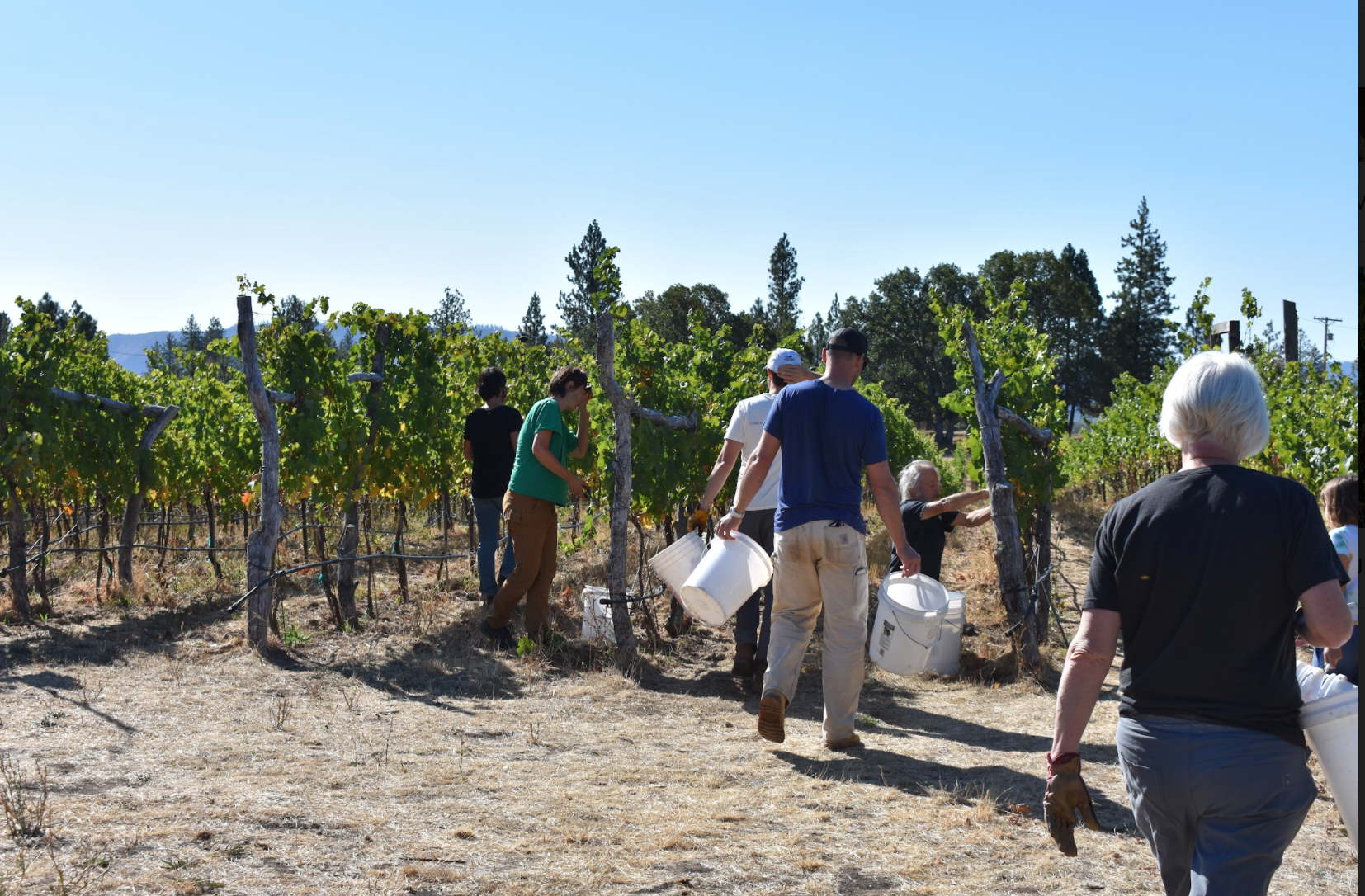
Don't complain
No one likes a complainer. This is amplified during high periods of stress. Even if it means cleaning a tank for the x-teenth time that day, be prepared to get your hands dirty. No task is too low on the totem pole, even for the head winemaker. There are a lot of unglamorous things about winemaking; but if you truly love what you are doing, it won't matter.
DO stretch
Bending over to pick fruit, heaving heavy hoses above the head, pushing and pulling large equipment, punching down fruit caps -- it's a big strain on the body. Your back, shoulders, arms and legs will all be put to the test. Thus, make sure you are stretching daily to avoid unnecessary injury.
DO have fun
Harvest is not for the faint of heart. It is HARD work. It's likely the hardest you'll ever work, but also the happiest you'll ever be. At least it was that way for us! Never forget why you decided to work this role; perhaps it was to actualize a dream in winemaking or for a new life experience. Regardless, enjoy the ride and have fun!
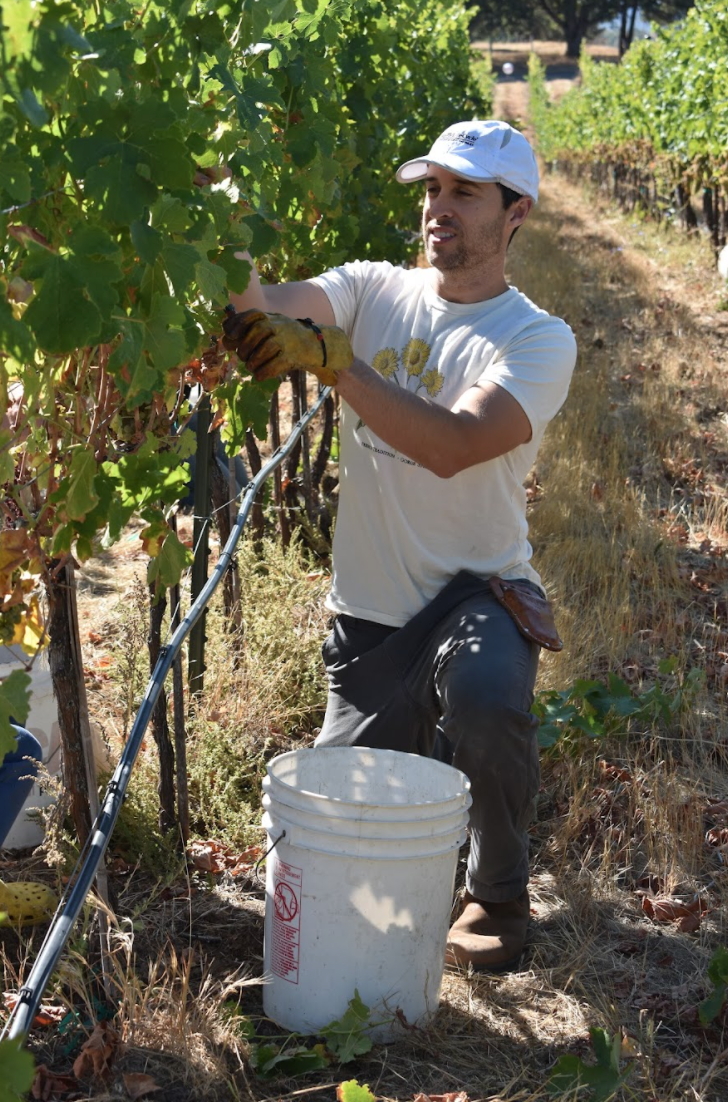
All about Canopy Mangement
In the last post, I described the many vineyard tasks in the Spring such as pruning, tying and trellising. As the vines start to grow and the long summer days kick in, Alexis has stressed the importance of the next task at hand: Canopy Managment. This is what I've learned so far:
Canopy definition
The canopy of a grapevine is defined as the collective parts of the grapevine's fruit, trunk, shoots, cordons and leaves. So technically, when we covered pruning and tying down canes, that was canopy management too--albeit early stages.
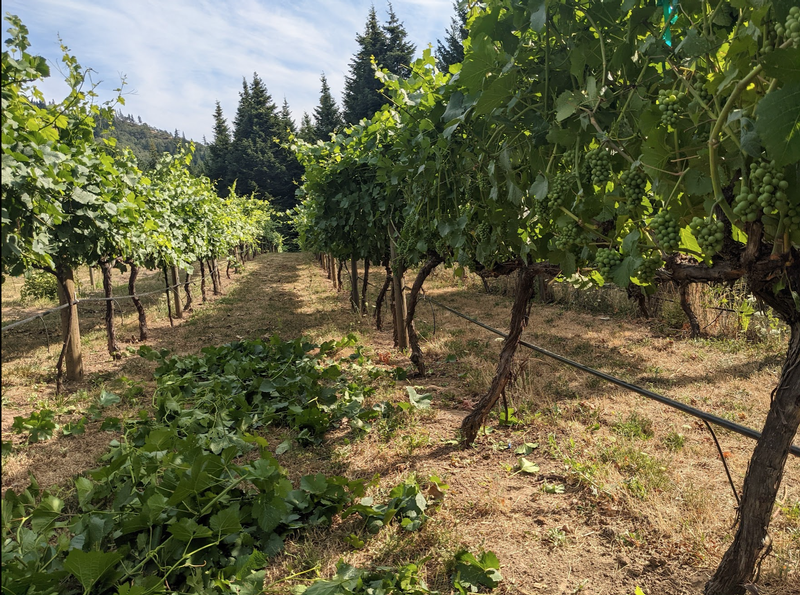
The real guts of the actual managing of the canopy happen once the vine starts to grow--shoots, leaves, suckers, fruit everywhere!
Purpose of canopy mangement
The goal of managing the vineyard canopy is to bring forth the best possible grapes to be grown. During the summer, the grapes undergo a critical growth phase in their life--the build up before harvest in the fall.
Left to their own will, vines will grow all over the place; into the rows, over the trellising wire, hang to the ground, shade the fruit etc.. but there are things one can do to improve the quality of the fruit.
How to effectively manage the canopy
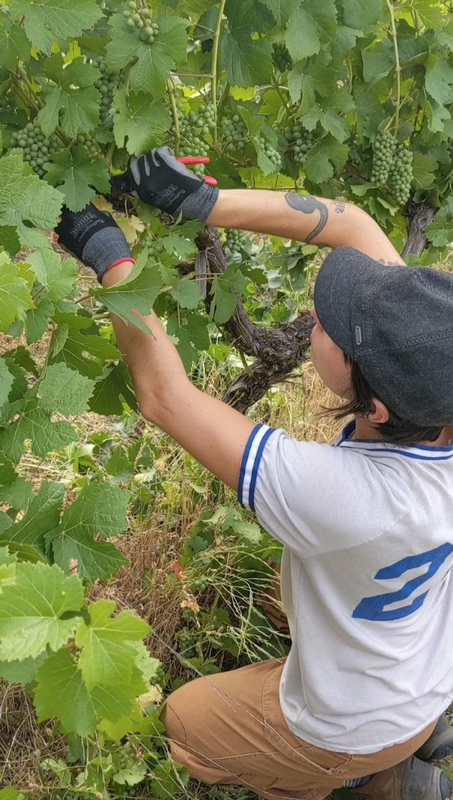
Follow these tips for effective canopy management. Style will differ with every vigneron, but this is what we've observed and learned so far:
- Generate airflow: Airflow through the vine's canopy is key. It will reduce the amount of disease pressure like mildew and bunch rot, requiring less spraying.
- Tucking: this may vary depending on the training and trellising style, but for VSP (vertical shoot positioning), you want the vine's shoots to grow upwards. In order to influence the vine to do so, you'll need to tuck the wild shoots into the trellising wire. This will not only help with airflow, but also allow more sunlight to reach the leaves for photosynthesis.
- Thinning: Too much fruit actually may not be a good thing. Balance is key in the vineyard and the vine's limited energy is stretched too thin by too many clusters on the vine, the end result won't be favorable. So the remedy is to thin (also known as dropping fruit). Another aspect of thinning is to get rid of any suckers and water shoots that didn't bloom any fruit.
- Leafing: Similar to abundant fruit, too many leaves can be a problem as well. Leaves are important to the life of the vine as they receive energy via photosynthesis. However, too much can block airlfow leading to higher disease pressure and provide too much shading to the fruit and
- Exposing the fruiting zone: Grapes need sunlight to ripen. If they are covered in shade by leaves, they're going to have a bad time. Thus, getting rid of the leaves in the fruiting zone will enable the grapes to have more sunlight exposure, help with airflow and also allow for anti-mildew spray to reach the grapes more easily.
- Deer Decoy: If the vineyard is not fenced properly, it may fall under attack from free roaming deer. Deer don't necessarily eat the fruit but they will munch on the leaves. By keeping a few leaves around the fruiting zone, it will allow some margin for the deer to consume their leaves without negatively impacting the plant.
Key takeaways for Canopy Management
Domaine Pouillon stresses balance in the vineyard. Too much thinning and leafing will lead to a malnourished vine. In contrast, a vine that has too many fruit clusters and leaves will have a tough time reaching full ripening and maturation.
There are many choices to make during this critical phase. Choose wisely, and the vine will be set up for success as we barrel toward veraison and harvest.
First four months working at the winery
What’s it like to work on a winery?
My exposure to winemaking thus far has only been helping out during harvest. Long, enjoyable hours of carefully moving fruit and juice from one area to another. Cleaning, laughing, drinking, cleaning. The work was fast paced and often left me with more questions than answers. I had a focused snapshot of the winemaking process, but not the entire picture.
Working at Domaine Pouillon has allowed me to see the entire process–from pruning to vines breaking buds and eventually, to harvesting and fermenting. Here are some of the highlights from working at the winery from January to May, 2021:
Great wine begins in the vineyard
This is an old saying.. and one I had rolled my eyes at.. just a marketing term right? But now I appreciate how much work goes into the vineyard–basically all year, until the fruit is ready to be plucked. The healthier the fruit is, the easier it will be to transform into wine.
Since harvest is completed by winter, most of my hours have been spent in the vineyard. I was grateful for this, since it’s the area of winemaking that I’ve had the least experience with.
Ripping out vines
Winter vines are dormant, free of shoots, leaves and fruit. Thus, it’s a great time to make decisions about propagating, removing, or planting new vines. In one of the vineyards, we removed a few acres of vines that were malnourished or dead. This was accomplished by securing one end of a metal chain to the base of the vine and the other, to the bucket of a tractor. Then, liftoff!
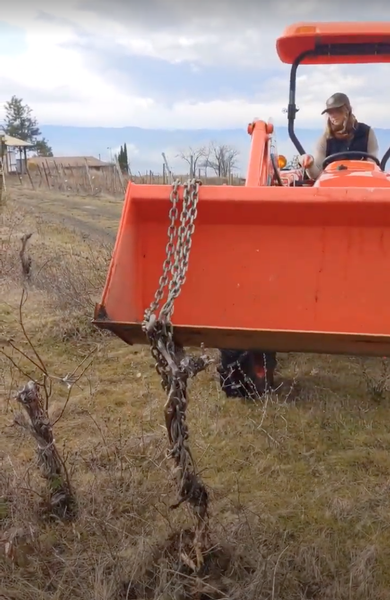
Assistant Winemaker Teddi Fuller operates the tractor to rip out the dead vines.
Once all the vines are out of the ground, then we can mix the area to get the soil breathing nicely. Next, we add organic compost to the ground and eventually, replant with cuttings (young vines) to hopefully produce some beautiful fruit in a few years.
On the estate vineyards, most of the vines are in good shape. However, there are the occasional ones that die or are damaged (frost damage can be one culprit). For the one-off’s, it’s inefficient to use a tractor, so we simply remove by hand and shovel. Sometimes there’s a young shoot from the base (a sucker) that we can re-train to the metal stake. For more on training vines, see below.
Pruning, Training and Tying
Pruning is one of the most important decisions that a vigneron must make throughout the year. Prune too aggressively, and you’ll be left with a meager fruit output. Prune too little and have too much fruit, diluted flavor as well as possible problems stemming from the lack of airflow in the canopy.
Additionally, how the vine is pruned will result in consequences not only this year, but the year after as well. I spent time pruning in Sonoma at Small Vines winery, but other than that I was starting with a blank slate. Alexis (owner of Domaine Pouillon) stressed the importance of balance — leaving the proper amount of buds on each vine and setting up proper spacing to maximize airflow without leaving gaps. Every vine is like a puzzle; where do I cut in order to maximize the chance for best possible grape quality?
Once vines are pruned, they need to be trained. Training vines involves securing the trunk to a post (usually made from metal or bamboo). One project we worked on involved replacing bamboo stakes with metal ones, as metal lasts longer and won’t be subject to corrosion and breaking like bamboo. Vines will naturally have a mind of their own and by training the base to an upright post, you are helping them produce shoots in the desired vertical direction.
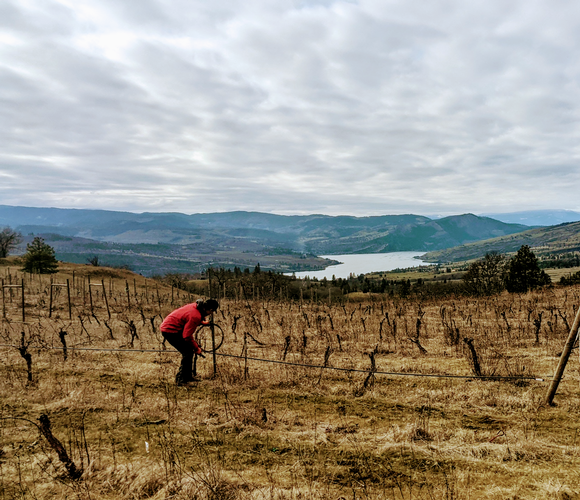
Shoots are the current year’s growth, and what will birth the fruit. Shoots grow from canes, also known as last year’s shoots (cane pruning) or from the cordon trunks (spur pruning). Left unattended, shoots will grow wild, using their tendrils to attach themselves to anything they can. Some vineyard managers and winemakers actually leave vines to grow like this and it’s called Bush Vine — popular in places like Swartland in South Africa.
Assuming you’re not aiming for Bush Vines, then you’ll want to tie the cane or cordon down to the trellising wire. This is done for two reasons: 1) to encourage vertical growth of the shoots and 2) to prevent the arms of the vines from blowing all over in the wind. The Columbia Gorge is extremely windy and when the canes produce their shoots with leaves, the plant will act like a large sail in the wind; tying down the wood to the trellising wire will keep the vine steady in squall-like conditions.
Suckering on the vineyard
After the vines are in a good place for growth, we wait for budbreak. This is exciting to see the transition from dormant wood to new growth for the upcoming season. Hopes are high with these beautiful green beauties spurting out!
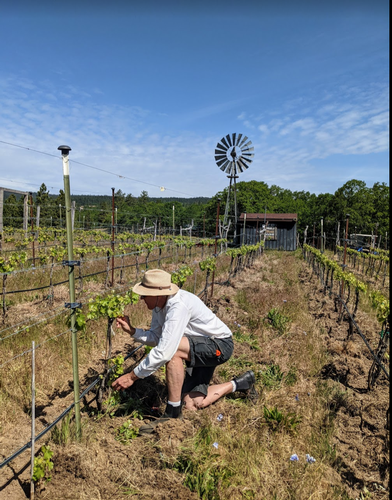
Alexis Pouillon inspects a vine while suckering
However, not all growth is desired. There’s a fixed supply of energy that the plant can produce, so you only want that to be focused in the right areas (up, into the shoots that are spaced properly). Shoots will grow all over the vine — the trunk, the base and parts not intended along the arms; these are called suckers. Suckering is pretty simple — just need to remove them with your hand. This will eliminate unnecessary energy being transferred to undesired locations and instead, focused into the intended areas of the vine.
Takeaways
Compared to storm of working a harvest, the Winter and Spring vineyard work has been a cool breeze; sipping my wine instead of gulping it down. Taking a minute to really understand the process and the amount of labor involved. Learning, learning, learning.
Appreciating the rewarding feeling of working with my hands with the sun at my back. Four months in and I am so happy; confident that I made the right decision to devote my full attention to our dream of winemaking. Often times during the day, I have a feeling–one that I never had while working at a desk–that in this very moment, this is exactly where I want to be and want to be doing.
6 Reasons why the Columbia River Gorge will be a top wine destination
The Columbia River Gorge is different from the Columbia Valley. Quite different in fact from any wine region we’ve ever been to–and we’ve been to them all (mostly).
What makes the Columbia Gorge so unique? We’ve compiled a list.
1. Sheer beauty
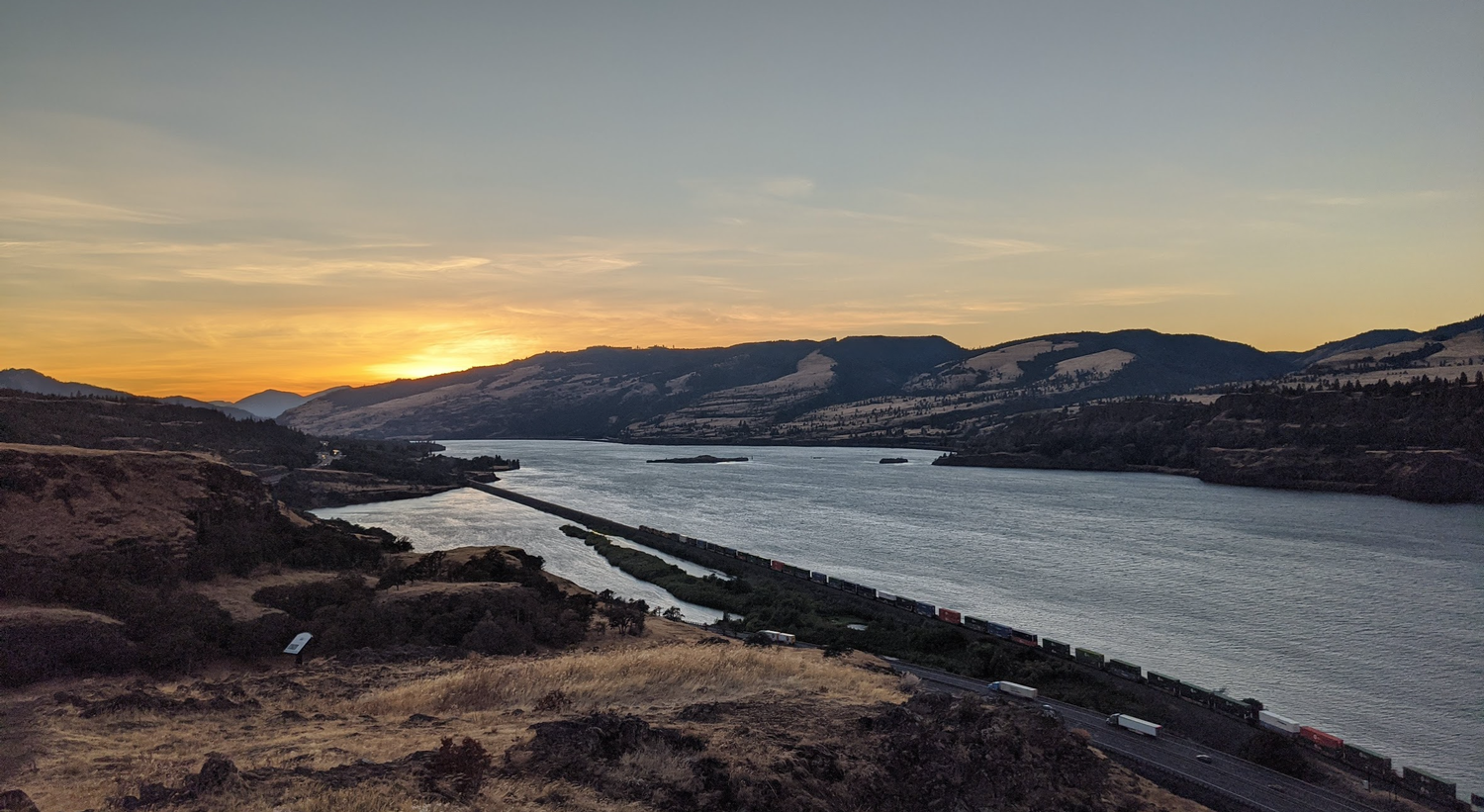
The first thing you’ll notice when driving to the Gorge (most commonly east from Portland), is how strikingly beautiful the approach is. The vast, quick-moving Columbia river flanked by large cliffside mountains, create an appearance of a long, running canyon. Waterfalls line both the Oregon and Washington sides with few noticeable housing structures (thanks to a strict preservation committee).
Many wine regions are beautiful, but often present a similar image of rolling hills, moderate climate and the “zen” of wine country. Few destinations have such eye-popping natural wonders, like Mt. Hood and Mt. Adams complimenting the foreground of waterfalls, rivers and vines.
2. Variety is the spice of life
To characterize the Gorge from a varietal and climate perspective is a difficult task. When people ask us, we usually respond with “well.. it depends”. To the west on the Washington side, you have a cold, rainy climate which barely reaches enough growing days to ripen white varietals and few reds. This region of Underwood is said to be getting its own Sub-AVA soon and is often compared to Burgundy.
As you head east in Washington, things start to warm up and by the time you reach the town of Lyle (about 30 miles east of Underwood), it’s roughly 5-10 degrees hotter with half the average rainfall. Here in Lyle, Domaine Pouillon works primarily with Rhone varietals (Syrah, Viognier etc..).
South of Lyle on the Oregon side is Mosier, where Analemma Wines is producing everything from Grenach to Cabernet to Pinot Noir to Gerwurztraminer. Adding another variable into the mix is the high winds which can create small pockets of microclimates.
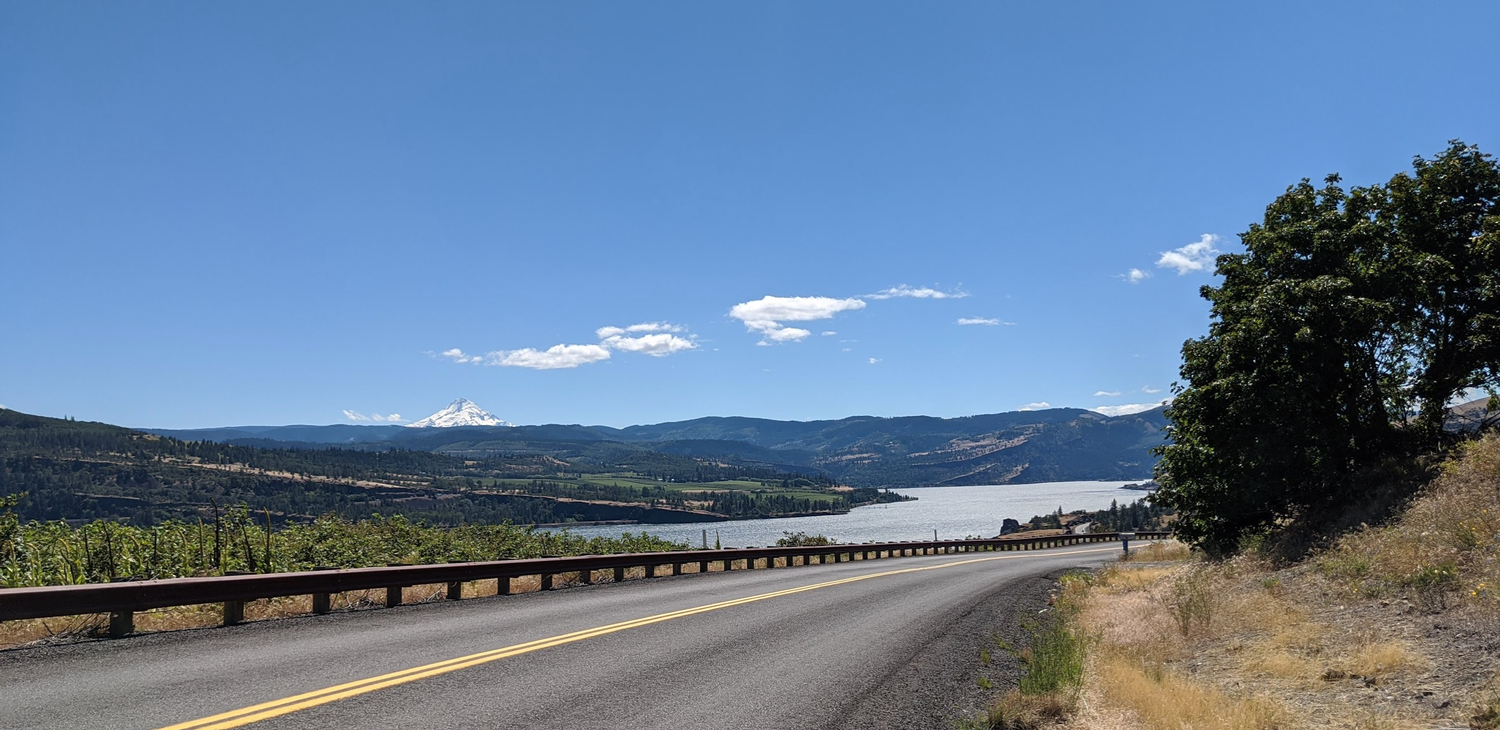
Many regions are typified into one or two i.e. Willamette Valley: Pinot Noir and Pinot Gris, Margaret River: Cabernet and Chardonnay, Burgundy: Pinot Noir and Chardonnay. But in the Gorge, there are virtually endless possibilities.
3. So much room for activities!
We’ll just assume you’re not complete wine nerds like us who will spend a week tasting wine at 20+ wineries (this is not an exaggeration, and here are some tips). Thus, you and/or your party may want to fill the schedule with a few non-wine related activities.
There is no shortage of adventure here: Kite boarding, wind surfing, rock climbing, mountain biking, white-water rafting, horseback riding, sailing, hiking, kayaking, skiing, snowboarding, snowmobiling, snowshoeing.. you name it, it’s here.
4. Less developed than ______
Over the last 50 years, many wine regions around the world have transformed from sleepy farming areas to bustling tourist industries resembling the likes of Disneyland (we’re looking at you, Napa). Crowded wine regions not only make it harder to nab tasting appointments, but naturally drive up the costs ($100+ per person is not uncommon in Napa and Sonoma).
Not in the Gorge. Average tasting fee runs ~$15/flight and bottle prices are very reasonable.
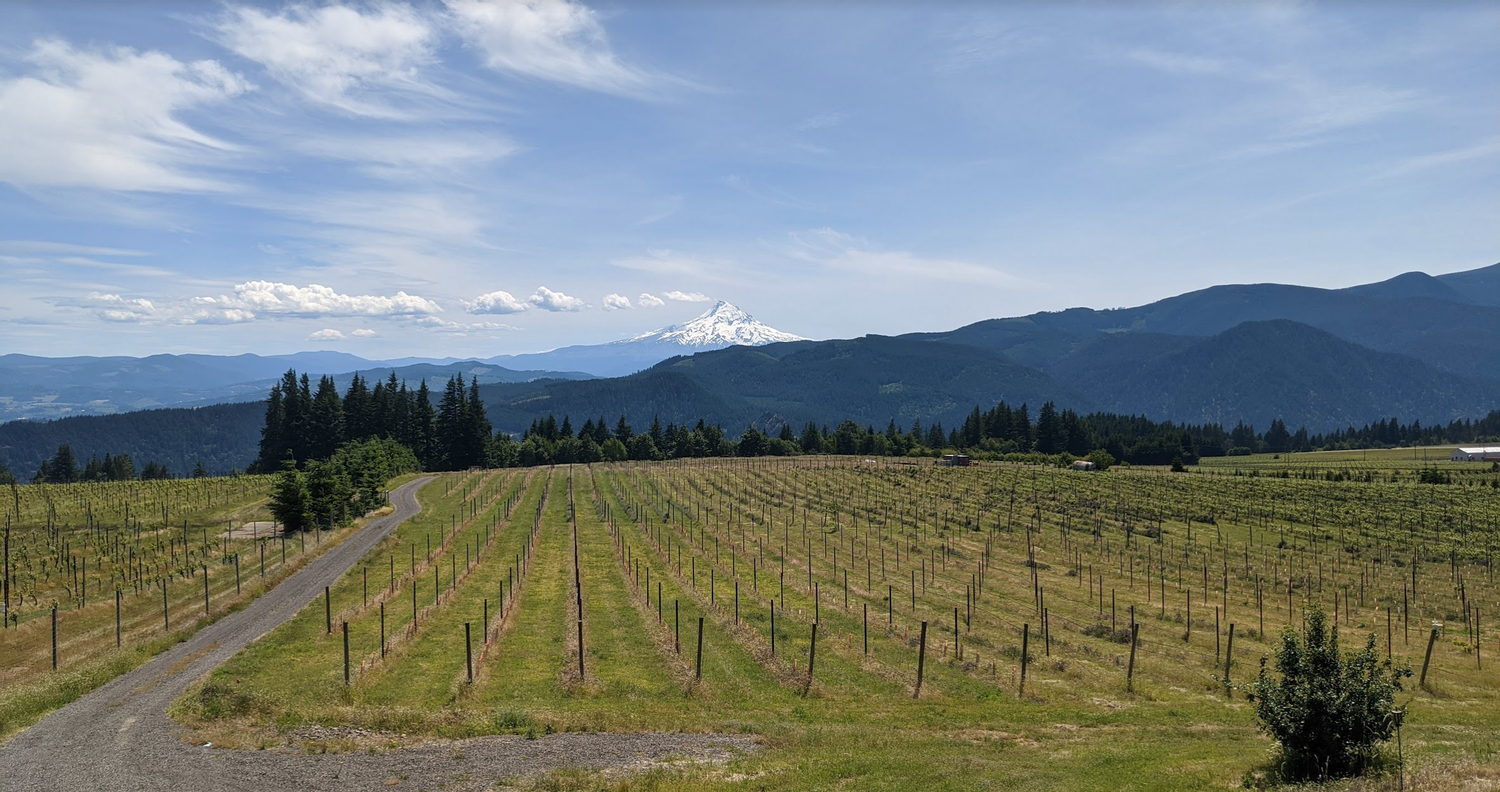
Another perk of regions that are relatively unknown is the “pioneer” or “wild wild west” element. Since there are still relatively few producers, there’s not one tried and true format that others are copying nor are there any mega beverage brands that owns multiple properties; winemakers are channeling their entrepreneurial spirit and doing things their way.
At Savage Grace, Michael Savage is creating wines that are bright, fruit forward with high acid. Nate Reddy at Hiyu Wine Farm is making natural wines, with organically farmed grapes. Alexis Pouillon at Domaine Pouillon is creating french-style wines as an homage to time he spent working in the Southern Rhone.
Diversity is not just in the grapes, but in the styles and passions of the different winemakers.
5. Major airport proximity
Visiting the Gorge is easy. For those near Seattle or Portland, the Gorge can be accessed via a car ride. For those further away, Portland (PDX) is a major international airport and is less than an hour drive to the Gorge. This makes assembling a group trip a breeze and is one reason why this area is becoming a very popular wedding destination.
6. Cooler than you
Many warm climate wine regions are in trouble. Both from the perspective of fire danger and also global warming, forcing the replanting of certain varietals. Bordeaux and Napa are both reporting that the rising temperatures will result in their famous Cabernet Sauvignon grapes being replanted with Malbec and Zinfandel respectively.
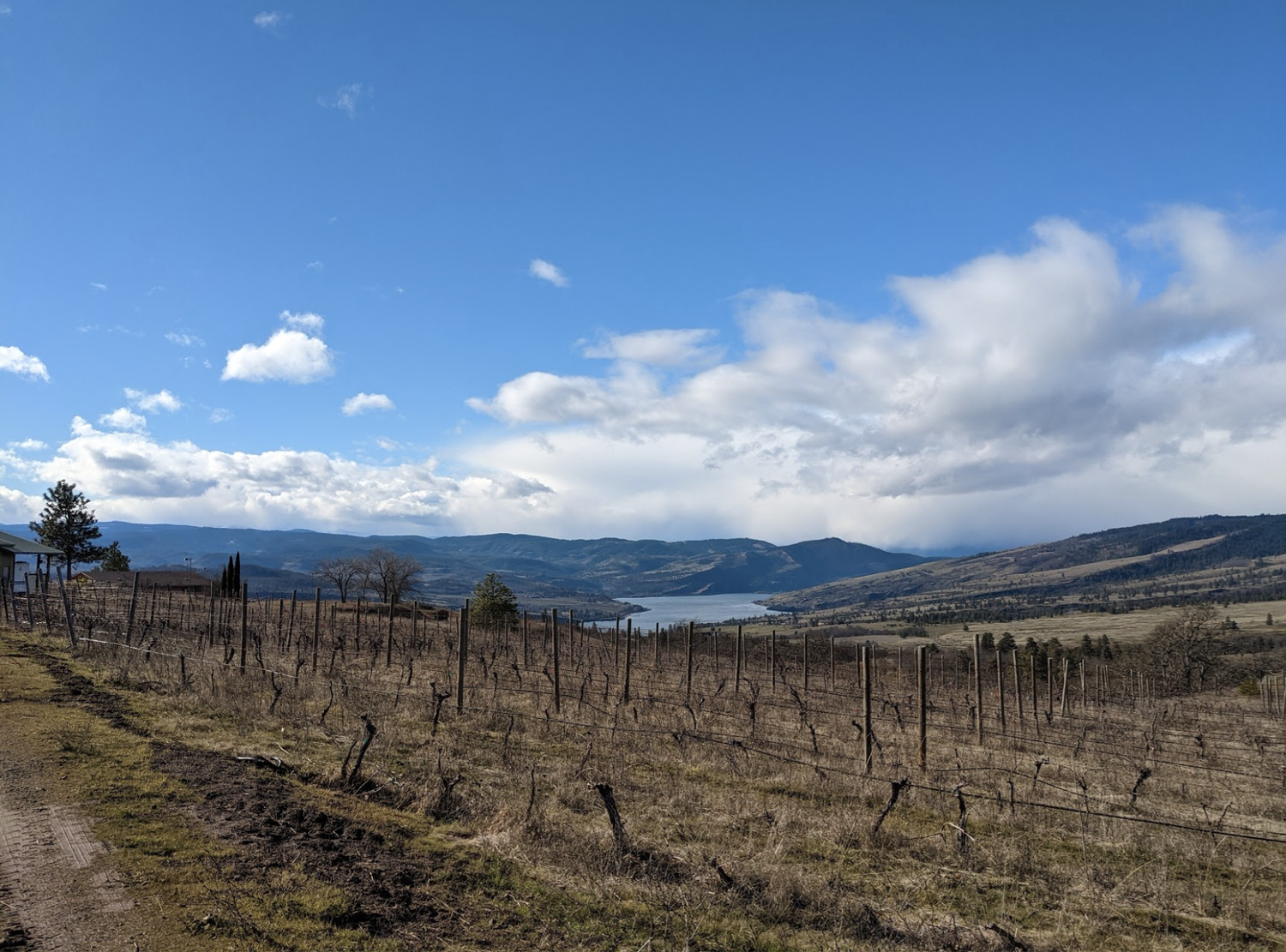
While parts of the Gorge do get warm and have some risk of fires, areas like White Salmon and Underwood are considered cool-climate (classified by temperature growing degree days). On top of this, the wind and river proximity brings a cooling presence over the vines in the Gorge.
Planting roots in the Gorge
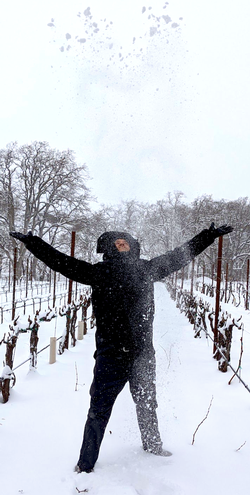
While traveling across the world's many wine regions, most often my favorites were ones that flew under the radar; those regions without national recognition but with massive potential. I would dream about one day running a small label in such a region, being somewhat of a pioneer to a region that would one day boom with tourism and superfans.
Three years ago, Cassie and I discovered the Columbia Gorge AVA by happenstance. We were blown away with the naturally beautiful terrain, the array of adventure activities and the budding wine scene. Ever since, we've used much of our vacation and remote flexibility to spend time here; we continue to grow more attached each day.
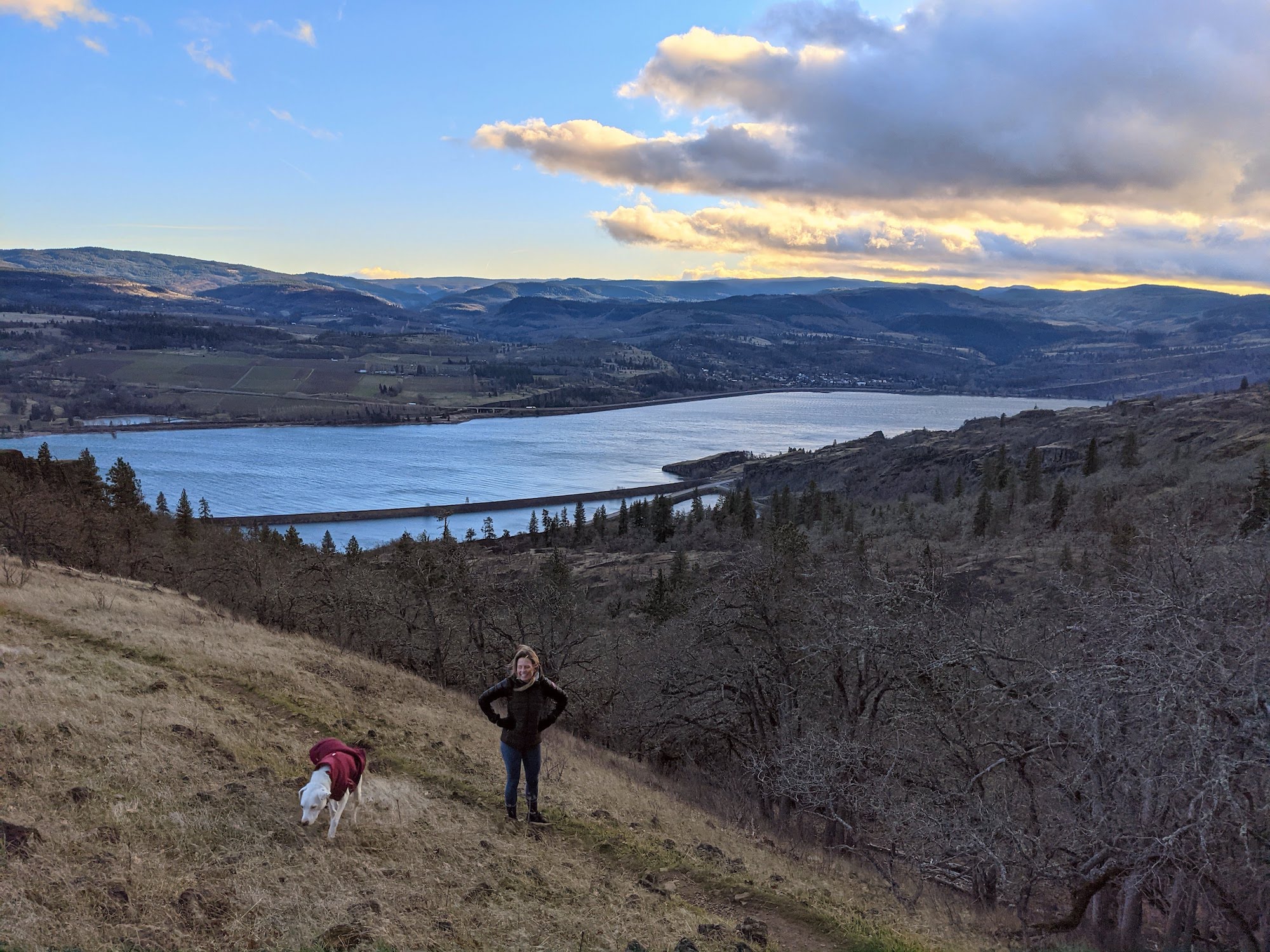
Dream of starting a winery
The goal of starting our own boutique wine brand remains our lifelong goal; perhaps a small winery facility and tasting room. But how does one attain this? We do have a fair amount of wine-related experience. Between us, we have:
Worked three harvests around the world
Hold certifications from WSET and Enology degree-in-progress at UC Davis
Visited & tasted in nearly every global wine region.
But even with this knowledge, there is still so much to learn about running and managing a wine label.
Learn by doing
Enter Domaine Pouillon: a boutique-sized winery in the Columbia Gorge producing ~2500 cases per annum, specializing in Rhone Varietals. It's a family-run operation complete with cool-climate estate Syrah vines and a small tasting room. The wines are fresh, bursting with aroma, acidity and depth--reminiscent of the types of wines we would find while traveling in Northern and Southern Rhone.
Domaine Pouillon is the type of winery that Cassie and I want to build down the road; it's the type of winery we seek out when we travel to new wine destinations. Locating the best small wineries around the world is the reason we started Wine Scribes. Thus, I've started working for Domaine Pouillon, channeling the motto of my alma mater: "Learn by doing".
First month on the job
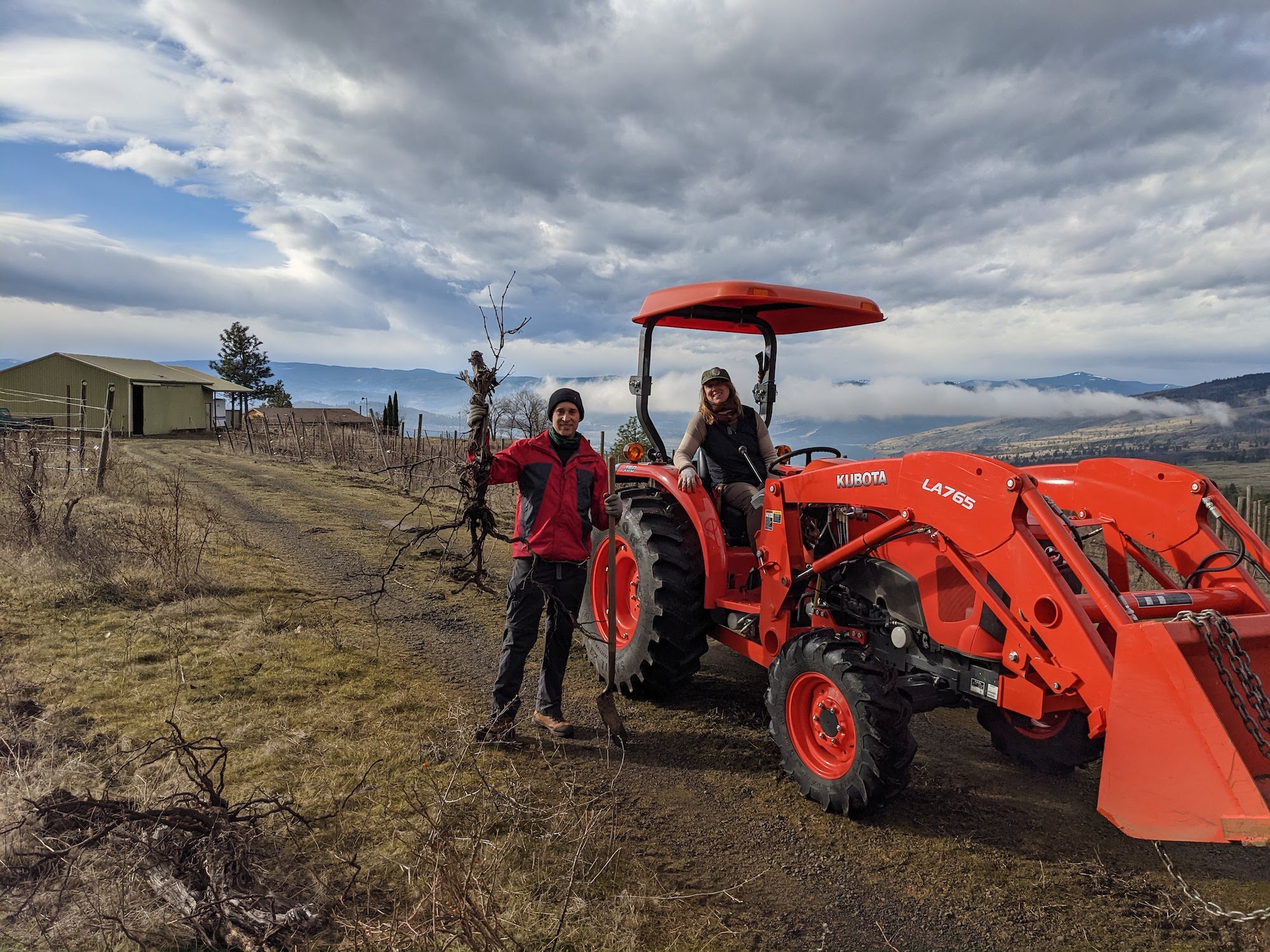
The first month has been a cacophony of cellar and vineyard tasks including barrel topping, sampling, tasting, racking, bottling, labeling, sanitizing, vine extractions, trellising and even roof repair. I'm drinking from the proverbial fire hose and loving each moment.
This is the benefit of working with small wineries--learn more, faster by being exposed to as many duties and responsibilities as possible. The experience so far has been priceless and am confident that it will serve as the building blocks of our dream.
stay in the know
Sign Up For Our Newsletter
Keep up to date on the latest wine releases, events, and promotions and get 10% off your next order.